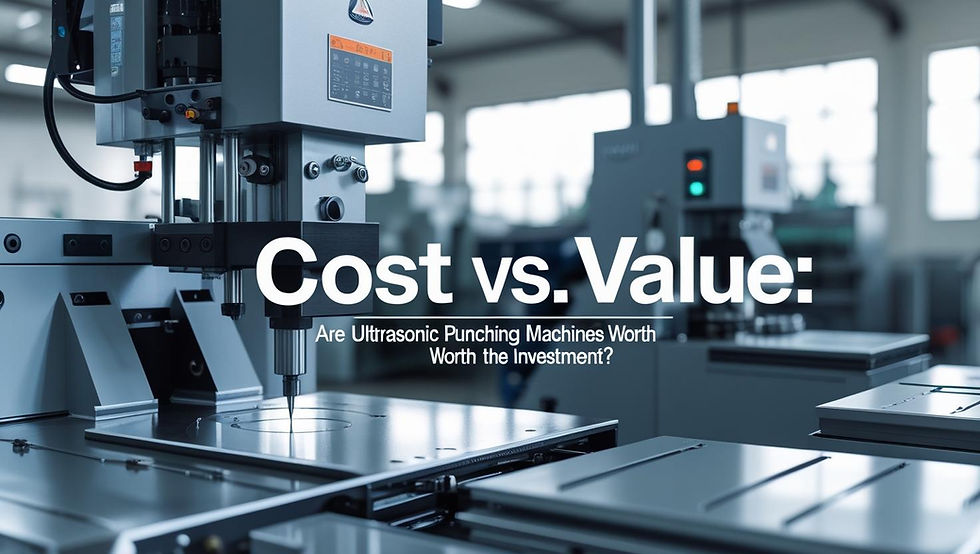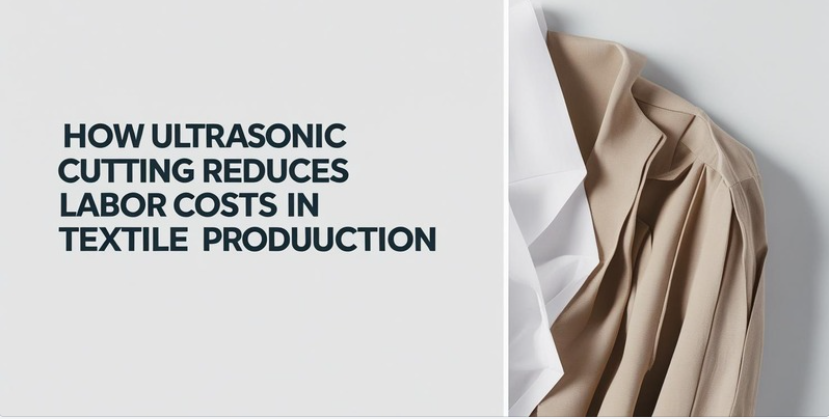Is an Ultrasonic Punching Machine Right for You?
- ztzgsteeltech
- Apr 4
- 5 min read

If you're in manufacturing, precision and efficiency are key. Whether you're working with textiles, plastics, or medical devices, choosing the right processing technology can make all the difference. One innovation that has gained attention in recent years is the ultrasonic punching machine. But is it the right choice for your production needs?
Ultrasonic punching offers a contact-free method of cutting and perforating materials with high precision. Unlike traditional mechanical punching, which relies on force and physical contact, ultrasonic punching uses high-frequency vibrations to create clean, precise holes without causing material deformation. This makes it ideal for applications where accuracy, speed, and minimal material waste are crucial.
But before investing in this technology, it's essential to understand how it works, its benefits, and whether it's suitable for your industry. Let's explore everything you need to know about ultrasonic punching machines and how they can impact your production process.
Understanding Ultrasonic Punching Technology
Ultrasonic punching technology operates on high-frequency sound waves, typically between 20 kHz and 40 kHz. These vibrations generate rapid mechanical oscillations that enable precise perforation without direct mechanical force. This process involves three main components: the ultrasonic transducer, the sonotrode, and the punching anvil.
The ultrasonic transducer converts electrical energy into mechanical vibrations. These vibrations are then amplified and transmitted through the sonotrode, which focuses the energy onto the material being punched. The punching anvil ensures that the process maintains structural integrity, resulting in clean, well-defined perforations.
Unlike conventional punching methods, which often cause frayed edges, material distortion, or excessive wear on cutting tools, ultrasonic punching is a non-contact process that delivers clean results. It's widely used in industries that require precise hole placement, such as medical textiles, automotive components, and packaging films.
Benefits of Using an Ultrasonic Punching Machine
One of the most significant advantages of ultrasonic punching is its precision. Because the process doesn't rely on physical force, the risk of material deformation is minimized. This is particularly beneficial for delicate materials like nonwoven fabrics, medical-grade plastics, and thin films.
Another key benefit is speed. Ultrasonic punching is significantly faster than mechanical punching, reducing cycle times and increasing overall production efficiency. This makes it a preferred choice for industries with high-volume manufacturing needs.
Cost efficiency is another factor to consider. Since ultrasonic punching does not require consumables like cutting dies or adhesives, maintenance costs are lower than traditional methods. The equipment's longevity and reduced downtime also contribute to long-term savings.
Environmental impact is another consideration. Since the process does not generate excessive waste or require additional materials, it aligns with sustainable manufacturing practices. Many companies are transitioning to ultrasonic processing to meet eco-friendly production standards.
Industries That Benefit from Ultrasonic Punching
Ultrasonic punching has applications across various industries, each with unique processing requirements. In the textile industry, it's used for cutting and perforating nonwoven fabrics, such as those used in medical masks, hygiene products, and filtration systems. The precision of ultrasonic punching ensures that edges remain sealed and fray-free.
In the plastics and packaging industry, ultrasonic punching is commonly used for creating breathable holes in plastic films. This is particularly useful in food packaging, where controlled ventilation is necessary to maintain product freshness. The medical device industry also benefits from ultrasonic punching, as it enables the production of perforated materials used in surgical drapes, medical filters, and sterile packaging.
The automotive sector utilizes ultrasonic punching for components such as airbags, filtration membranes, and interior trims. Because the process doesn't introduce additional stress to the material, it ensures the durability and functionality of these critical components. In the electronics industry, ultrasonic punching is used for precision perforation of micro-components, where accuracy is essential.
Factors to Consider Before Investing in an Ultrasonic Punching Machine
Before purchasing an ultrasonic punching machine, it's important to assess whether it's the right fit for your production needs. One key consideration is material compatibility. Ultrasonic punching works best with synthetic textiles, plastic films, and composite sheets but may not be suitable for thicker or denser materials.
Production volume is another critical factor. If your business requires high-precision perforations at scale, ultrasonic punching is an excellent investment. However, if your production volume is low, the initial cost of acquiring the machine might outweigh the benefits.
Customization and automation are also worth evaluating. Some machines offer programmable control systems, allowing for tailored processing that meets specific production requirements. Advanced models integrate with CNC systems, enabling automated operation and increased efficiency.
Industry regulations must also be taken into account. Medical and food-grade materials require compliance with standards such as FDA, ISO 13485, and RoHS. Ensuring that the machine you choose meets these standards is crucial for maintaining product quality and regulatory compliance.
Choosing the Right Ultrasonic Punching Machine Supplier
Selecting a reputable ultrasonic punching machine supplier is essential for ensuring quality and reliability. A good supplier will provide not only high-performance machines but also ongoing technical support and maintenance services.
Key factors to consider when choosing a supplier include their experience in ultrasonic automation technology, the availability of customized solutions, and the level of after-sales support offered. A reliable supplier should also have a track record of delivering high-quality equipment that meets industry standards.
If you're looking for an ultrasonic punching machine supplier, it's important to evaluate options based on machine performance, customer reviews, and long-term support availability. Investing in the right supplier ensures that your machine operates efficiently and remains a valuable asset to your production line.
FAQs About Ultrasonic Punching Machines
How does ultrasonic punching compare to laser cutting?
While both methods offer precision cutting, ultrasonic punching is preferred for applications where material integrity must be preserved. Unlike laser cutting, which generates heat, ultrasonic punching is a cold process that prevents material distortion.
What are the maintenance requirements for an ultrasonic punching machine?
Regular maintenance includes checking the transducer and sonotrode for wear, ensuring that the machine's power supply is stable, and keeping the working area clean. Proper maintenance extends the lifespan of the equipment.
Is ultrasonic punching suitable for small-scale production?
While ultrasonic punching is primarily used in high-volume production, some compact models are available for small-scale operations. However, the cost of the machine may be a limiting factor for small businesses.
What safety measures should be considered when using an ultrasonic punching machine?
Operators should wear appropriate protective equipment, ensure proper machine calibration, and follow manufacturer guidelines for safe operation.
How can I integrate an ultrasonic punching machine into my production line?
Many ultrasonic punching machines are designed to integrate seamlessly with existing automated systems. Consulting with a supplier can help determine the best configuration for your setup.
Conclusion
Ultrasonic punching technology offers a highly efficient, precise, and cost-effective solution for industries requiring non-contact perforation. Whether you're in textiles, packaging, medical device manufacturing, or automotive production, this technology can enhance your operational efficiency.
Before making a decision, consider factors such as material compatibility, production volume, and supplier reliability. With the right machine and a trusted supplier, ultrasonic punching can streamline your manufacturing process while improving quality and sustainability.
If you're exploring options, finding a reputable ultrasonic punching machine supplier like ZrinTech is key to ensuring a successful investment. By choosing wisely, you can optimize your production process and stay ahead in your industry.



Comments